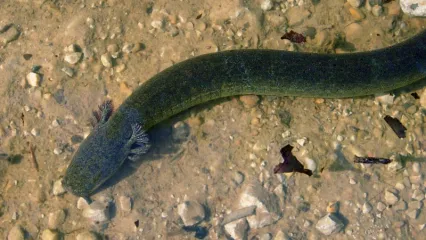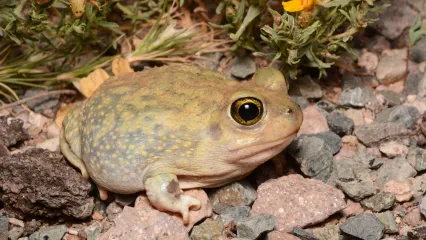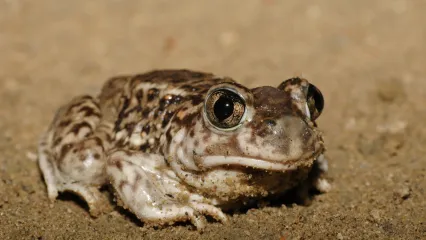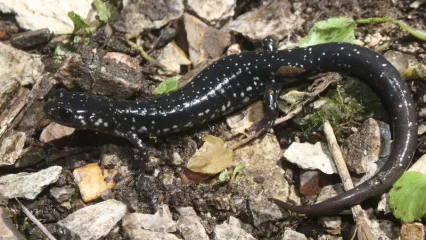
Description
Western lesser sirens are moderately large, elongate, aquatic salamanders that are eel-like in appearance. They have three sets of large external gills throughout their lives, tiny front legs, and no hind limbs. The background color of the body is dark gray to black, and, except for a subtle light line along the upper jaw, these salamanders have no obvious markings. Tiny black spots may be apparent on some individuals.
The only potentially similar salamander in Oklahoma is the Red River mudpuppy (Nectrurus maculosus), but this species has four legs. Additionally, Red River mudpuppies live in streams.
Size
Western lesser sirens can grow between 10 and 19 inches in length.
Habitat
These salamanders are permanently aquatic and usually occur in swamps, ponds, lakes, flooded areas along streams, and occasionally roadside ditches, but where aquatic vegetation is dense. Western lesser sirens occur only in the southeastern corner of Oklahoma. Their west to east distribution in North America extends from south-central Texas to North Carolina and north to south from central Illinois to northern Mexico and through most of peninsular Florida.
Life Cycle
Females breed for the first time during their second year and deposit clutches of many (100 to 200 or more) small eggs in February and March. Eggs are deposited in small cavities in mud at the bottom of swamps and ponds. During extended droughts, western lesser sirens bury themselves in the mud and form a cocoon around their body with skin secretions. The cocoon reduces water loss and allows the salamander to remain inactive for eight months or more.
Western lesser sirens feed on a wide variety of aquatic invertebrates.
How To Observe
Western lesser sirens are difficult to observe because they spend most of their time underwater. They can occasionally be captured by seining ponds or flooded areas along large streams. They can also be found by carefully searching in the water at night with good headlights.
(This profile was created by Dr. Laurie Vitt as part of a partnership between the Wildlife Department and the Sam Noble Oklahoma Museum of Natural History. It was funded as part of a larger State Wildlife Grant to survey and inventory amphibians and reptiles of the Wildlife Management Areas of Oklahoma: T-35-P-1.)


